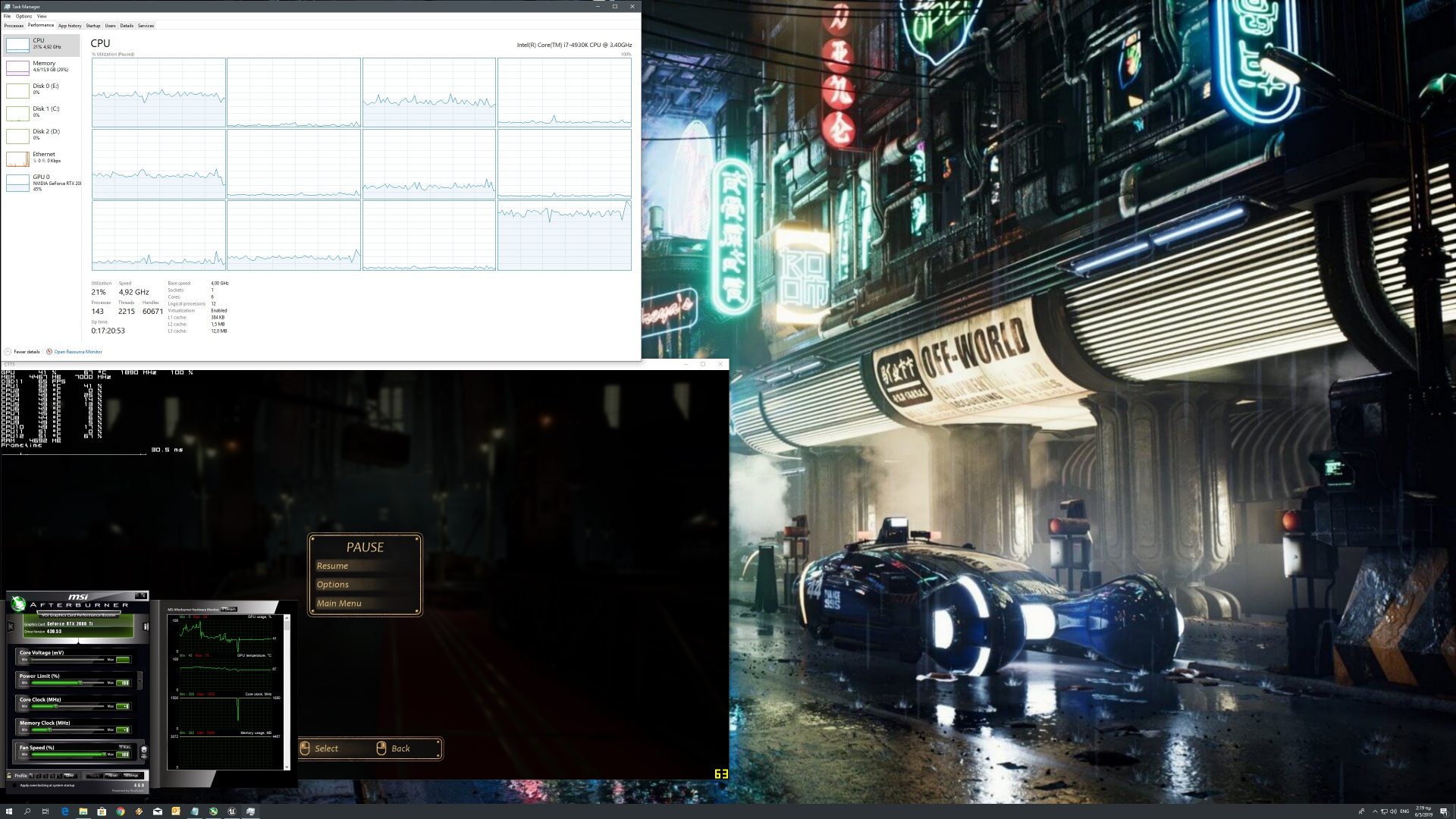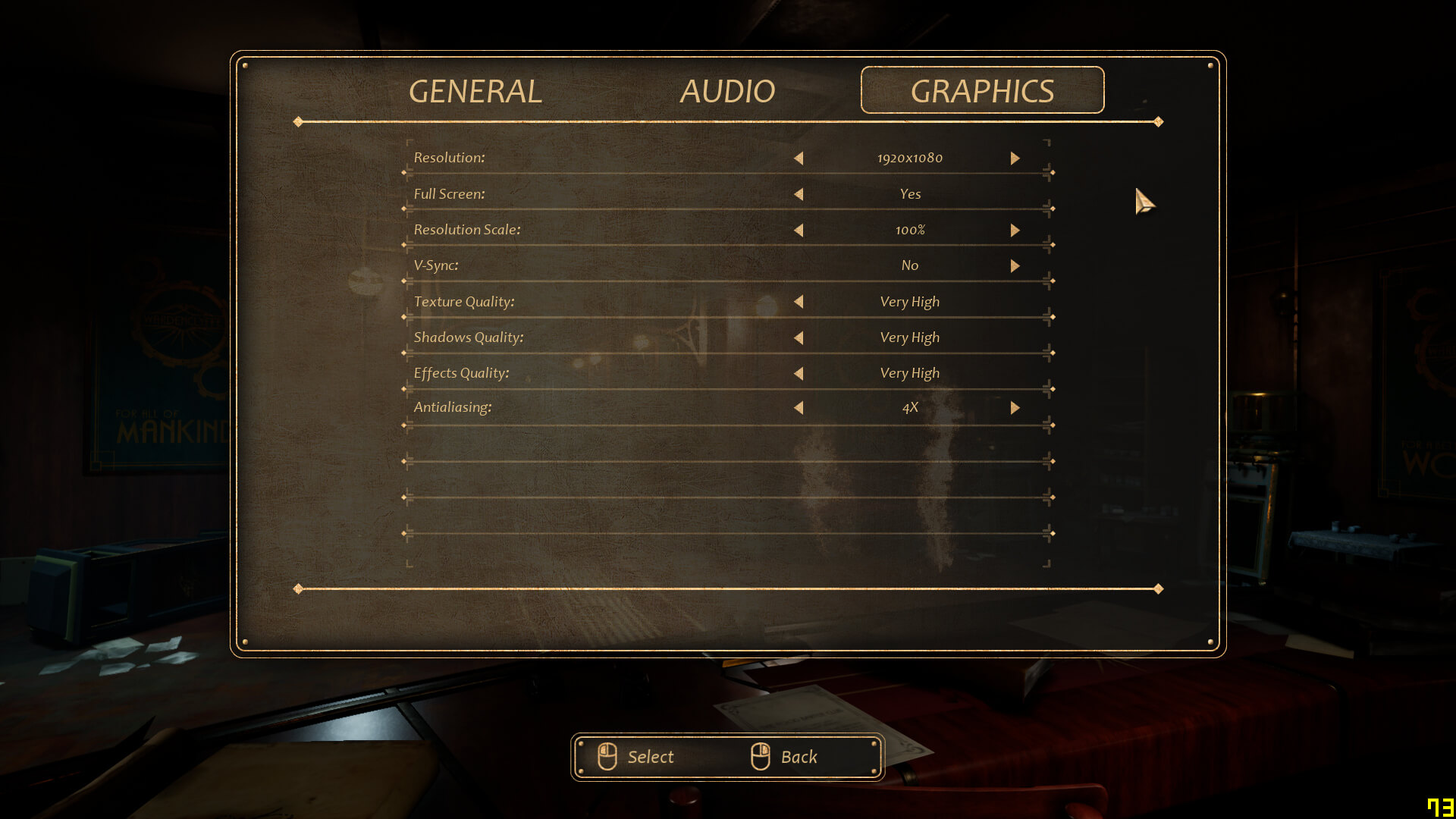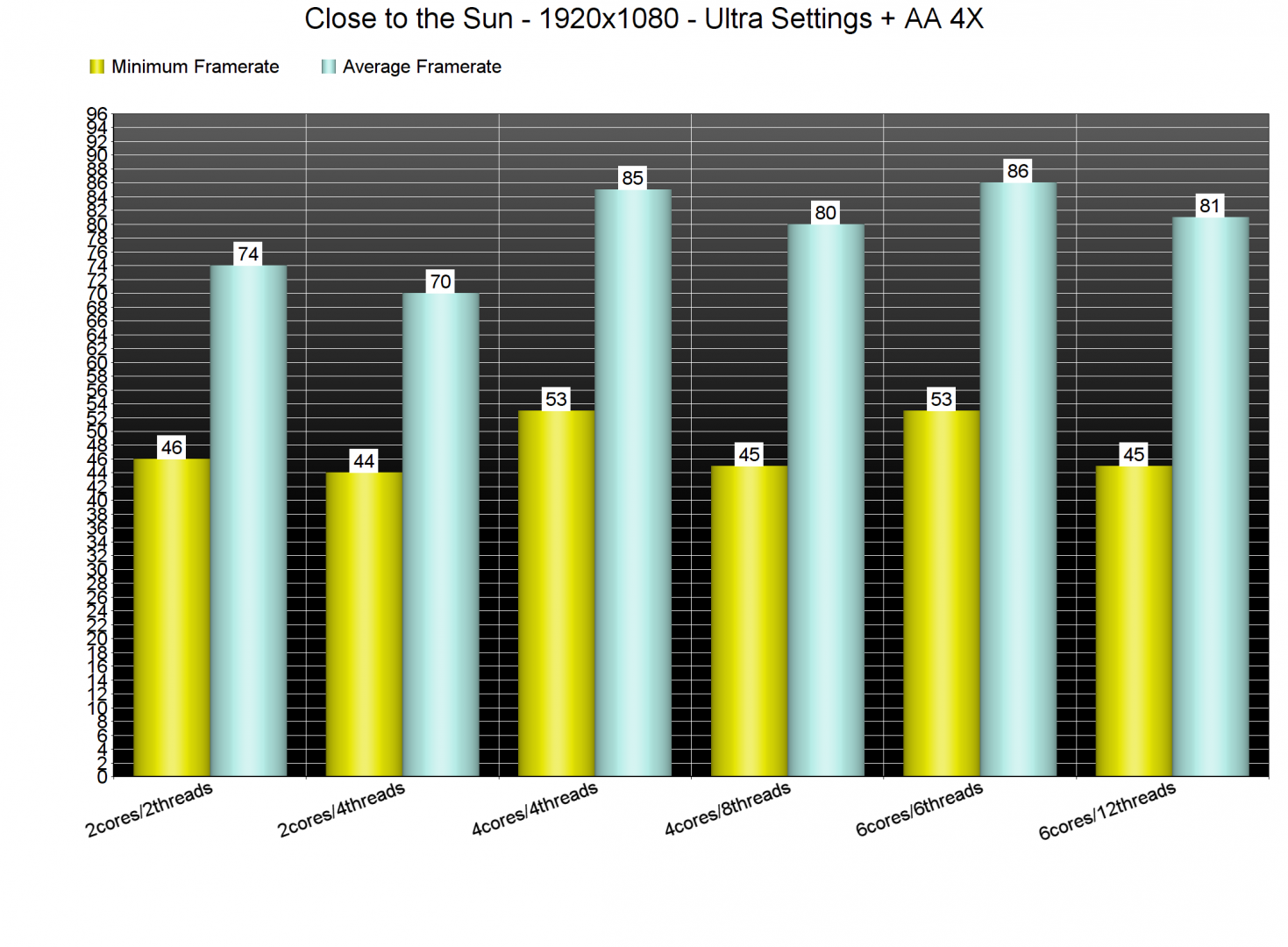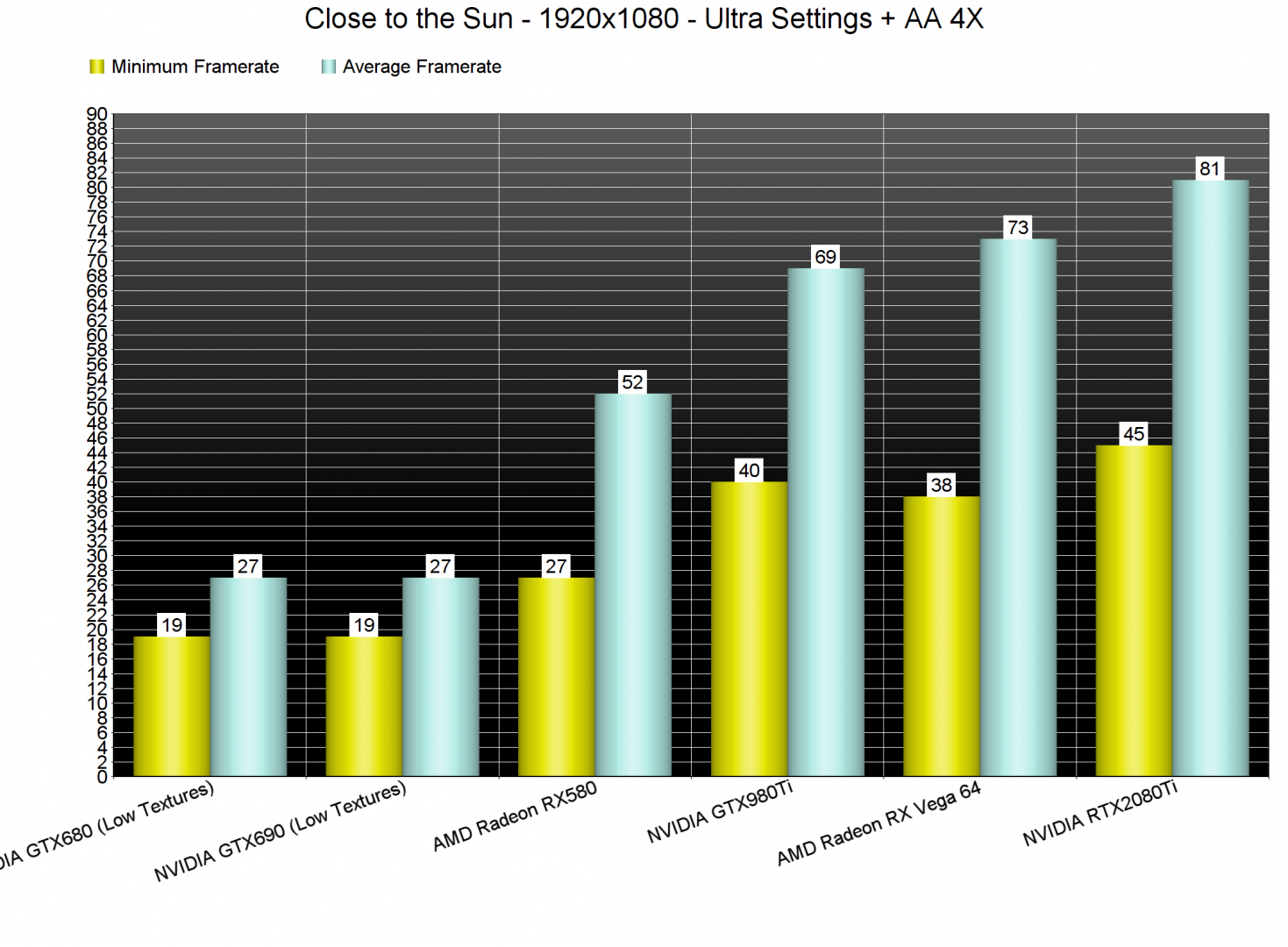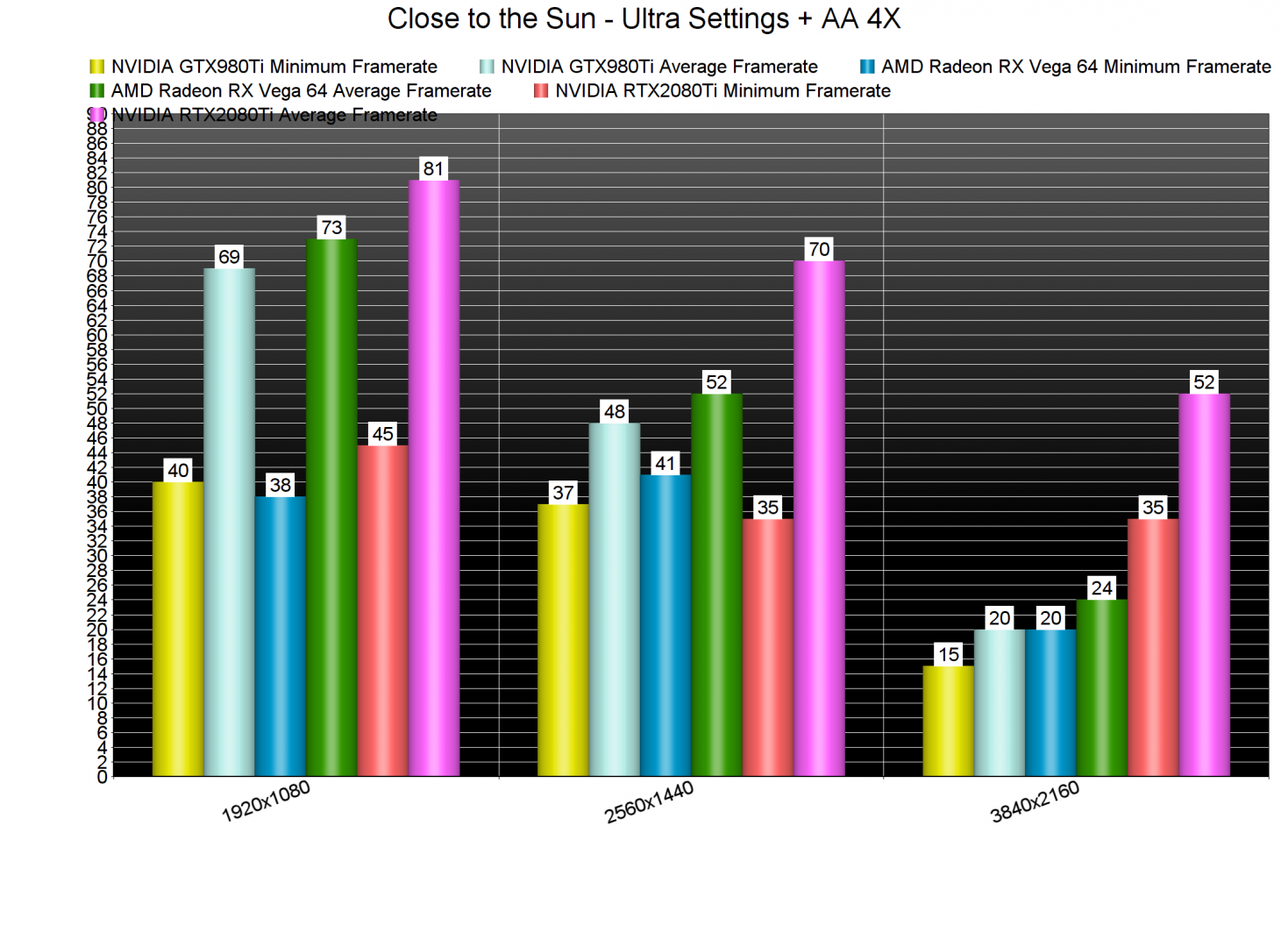Close to the Sun is the latest Epic Games Store exclusive game that has been released. Powered by Unreal Engine 4, this title features a similar art style to Irrational’s Bioshock games. As such, it’s time now to benchmark this game and see how it performs on the PC platform.
For this PC Performance Analysis, we used an Intel i7 4930K (overclocked at 4.2Ghz) with 16GB of DDR3 RAM at 2133Mhz, AMD’s Radeon RX580 and RX Vega 64, NVIDIA’s RTX 2080Ti, GTX980Ti and GTX690, Windows 10 64-bit, GeForce driver 430.53 and the Radeon Software Adrenalin 2019 Edition 19.4.3. NVIDIA has not included any SLI profile for this title, meaning that our GTX690 performed similarly to a single GTX680.
Storm in a Teacup has added very few graphics settings to tweak. PC gamers can only adjust the quality of Textures, Shadows, Effects and Anti-Aliasing. Furthermore, AA was constantly getting stuck at 6X (and we had to manually reduce it to 4X each and every time the game was loading a new area) and DSR was not working (meaning that those with 1080p or 1440p monitors will have to set their desktop resolutions to 4K in case they want to use higher resolutions than their native ones).
In order to find out how the game performs on a variety of CPUs, we simulated a dual-core and a quad-core CPU. Now while we were able to get a 60fps experience even on our simulated dual-core system, we do have to say that were seriously disappointed by the game’s CPU scaling.
Close to the Sun does not come with a in-game benchmark tool which is why we’ve benchmarked the docking area from the first level. That area was one of the most demanding we’ve experienced in the first three chapters, and you should consider it as a stress test. In other words, if you can run this area, you won’t face any performance issues with the rest of the game.
Despite using Unreal Engine 4, Close to the Sun is mainly using one CPU core/thread. As such, it comes as no surprise that there weren’t major performance differences between our six-core and our simulated quad-core systems. Not only that, but these systems performed slower when Hyper Threading was enabled, and the same applied to our simulated dual-core system which performed better when Hyper Threading was disabled. Moreover, the game suffers from some stuttering issues when loading new areas (something that is hinted by our minimum framerates).
What this ultimately means is that the game is unable to properly use multiple CPU cores/threads, and may introduce CPU limitations to owners of older quad-cores (or even AMD owners of CPUs that have worse IPC than their Intel counterparts). In order to overcome this CPU optimization issue, those seeking for framerates higher than 100fps will either have to overclock their CPUs or get newer CPUs with better IPC.
At 1080p and on Ultra settings (with AA set at 4X), our AMD Radeon RX Vega 64, NVIDIA GTX980Ti and NVIDIA RTX2080Ti were able to offer a smooth 60fps experience. On the other hand, our AMD Radeon RX580 was unable to come close to a smooth gaming experience. Furthermore, the only graphics card that was limited by our CPU at 1080p was the NVIDIA RTX2080Ti (which was to be expected as the RTX2080Ti is a beast and is meant for gaming at 1440p or 4K resolutions); all of the other GPUs were used to their fullest.
At 1440p, our AMD Radeon RX Vega 64 and NVIDIA GTX980Ti were unable to offer a 60fps experience, and the only GPU that was capable of such a thing was the NVIDIA RTX2080Ti. However, even NVIDIA’s flagship GPU was unable to offer a smooth gaming experience in 4K in our benchmark area. Now as we’ve already stated, all the other areas are less taxing than the one we’ve benchmarked, meaning that we were able to hit 60fps in these areas at 1440p/Ultra/AA 4X on our AMD Radeon RX Vega 64 and at 4K/Ultra/AA 4X on our NVIDIA RTX2080Ti.
Graphics wise, Close to the Sun features an amazing art style that is very similar to the first Bioshock games. The game packs some stunning reflective areas, some cool bloom effects, and a large amount of light sources can cast dynamic shadows. It’s really impressive witnessing a small studio like Storm in a Teacup matching the visuals of a triple-A game, so kudos to them. Close to the Sun is not perfect, for example there are some low-res textures and environmental interactivity is limited, but it’s definitely pleasing to the eye.
In conclusion, Close to the Sun currently suffers from some awful CPU optimization issues. The game relies solely on a single CPU core/thread, something that may introduce performance issues to owners of older quad-core CPUs (which theoretically should be able to run the game provided more than one or two cores were being used). Now the good news here is that, even with these CPU optimization issues, the game can run with 60fps on CPUs similar to our Intel i7 4930K. Furthermore, we did not experience any mouse acceleration/smoothing issues, crashes or stability issues. In its current state, Close to the Sun is a mixed bag so here is hoping that Storm in a Teacup will address these tech/optimization issues via a post-launch patch.
Enjoy!

John is the founder and Editor in Chief at DSOGaming. He is a PC gaming fan and highly supports the modding and indie communities. Before creating DSOGaming, John worked on numerous gaming websites. While he is a die-hard PC gamer, his gaming roots can be found on consoles. John loved – and still does – the 16-bit consoles, and considers SNES to be one of the best consoles. Still, the PC platform won him over consoles. That was mainly due to 3DFX and its iconic dedicated 3D accelerator graphics card, Voodoo 2. John has also written a higher degree thesis on the “The Evolution of PC graphics cards.”
Contact: Email


